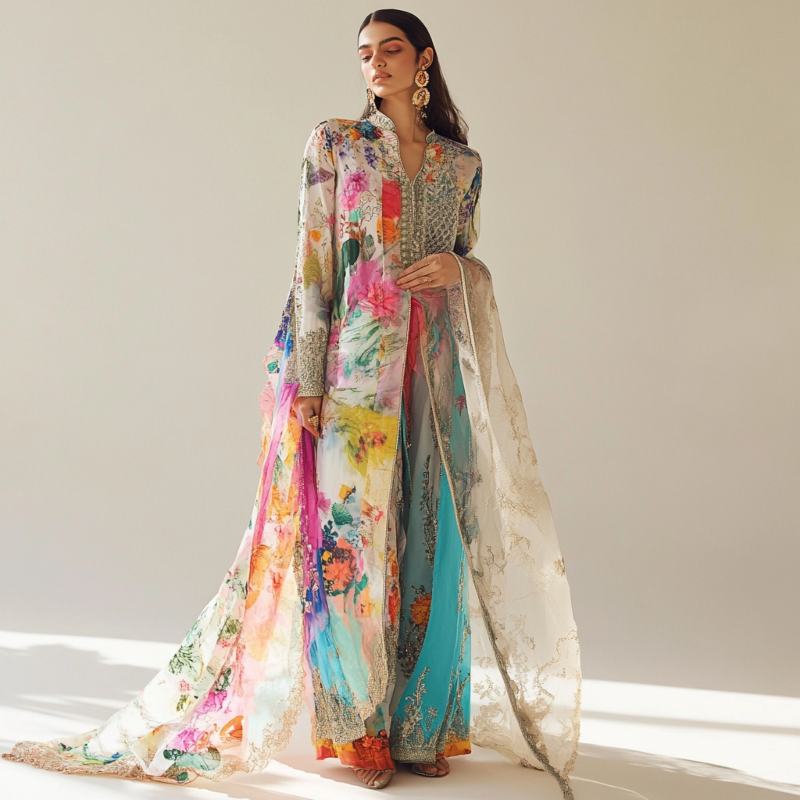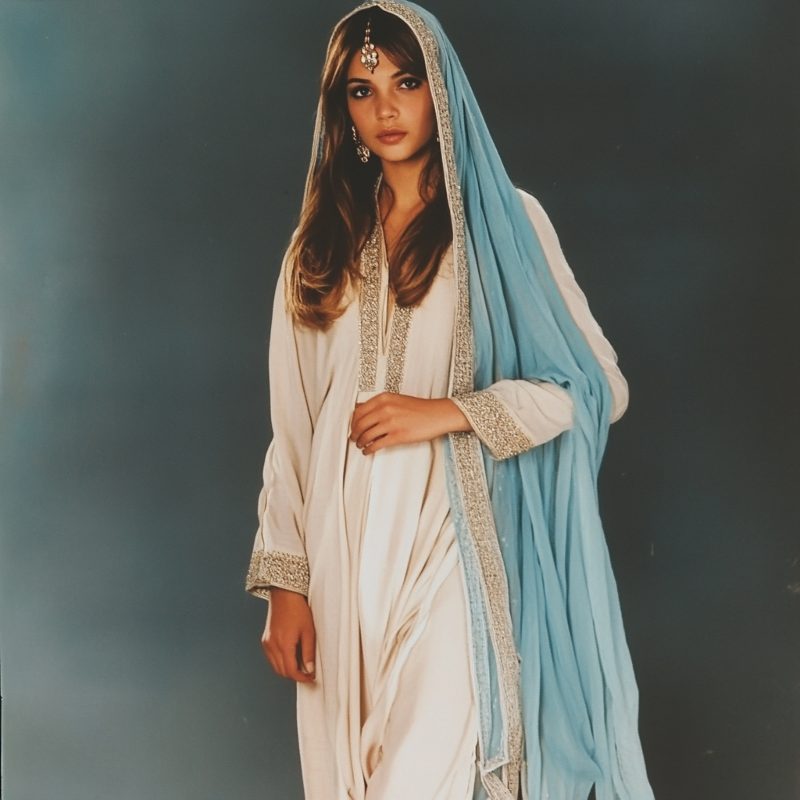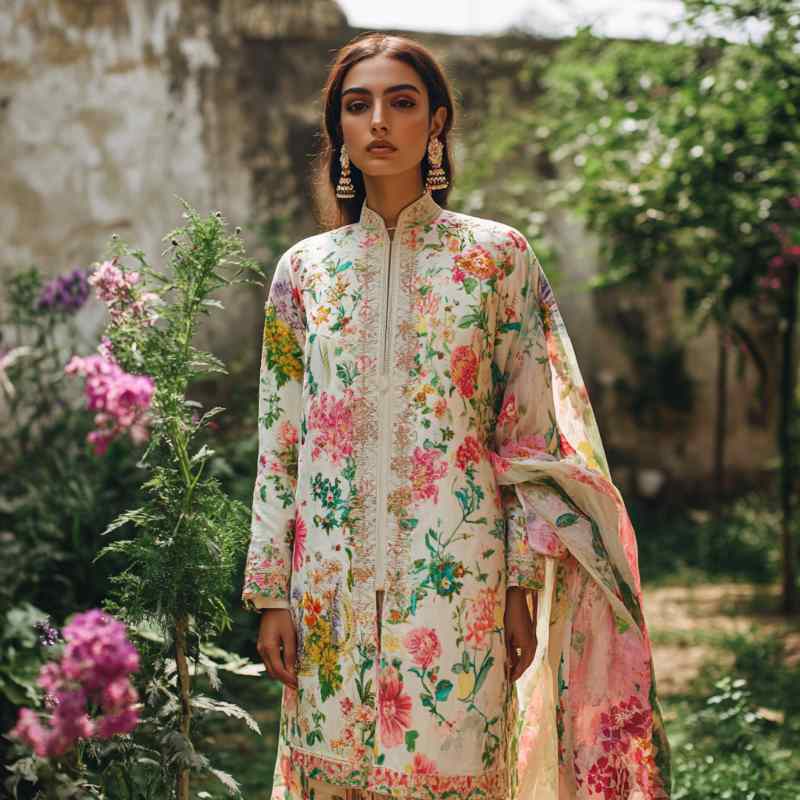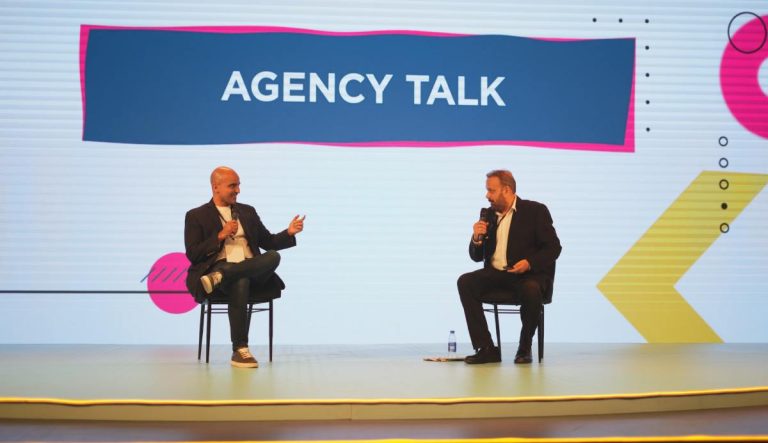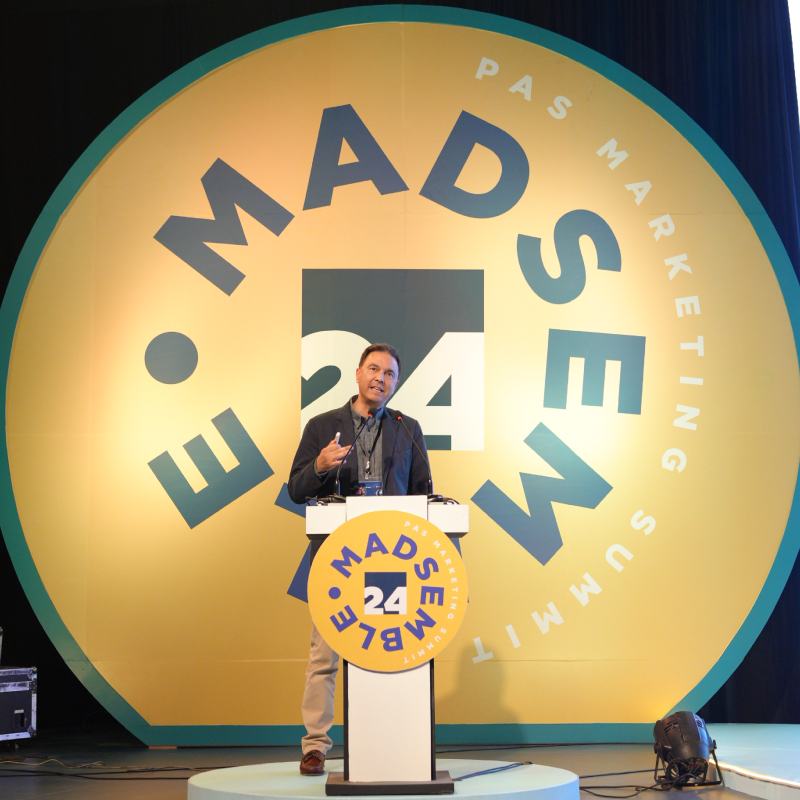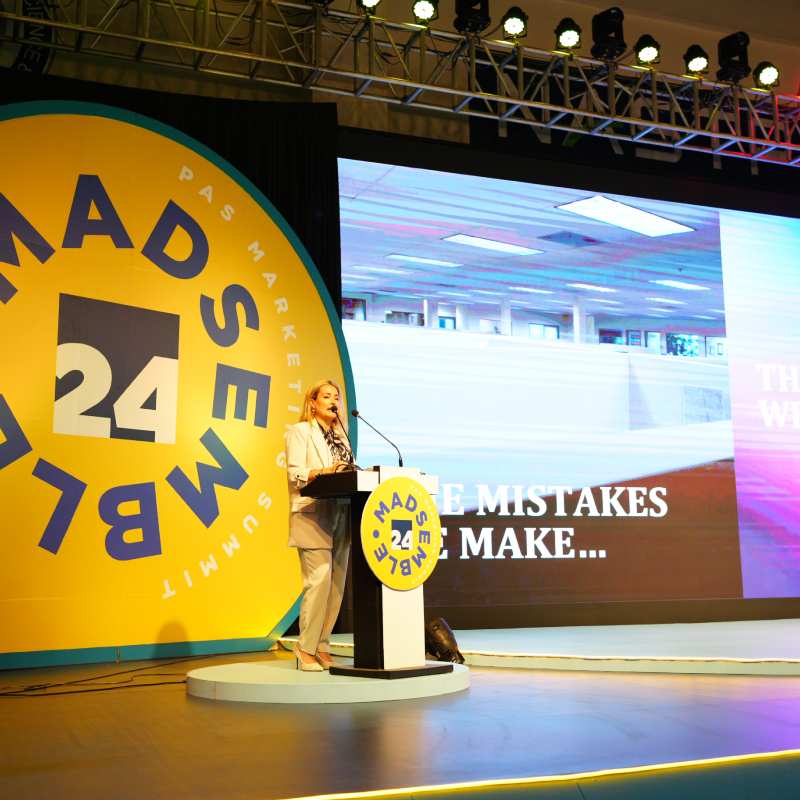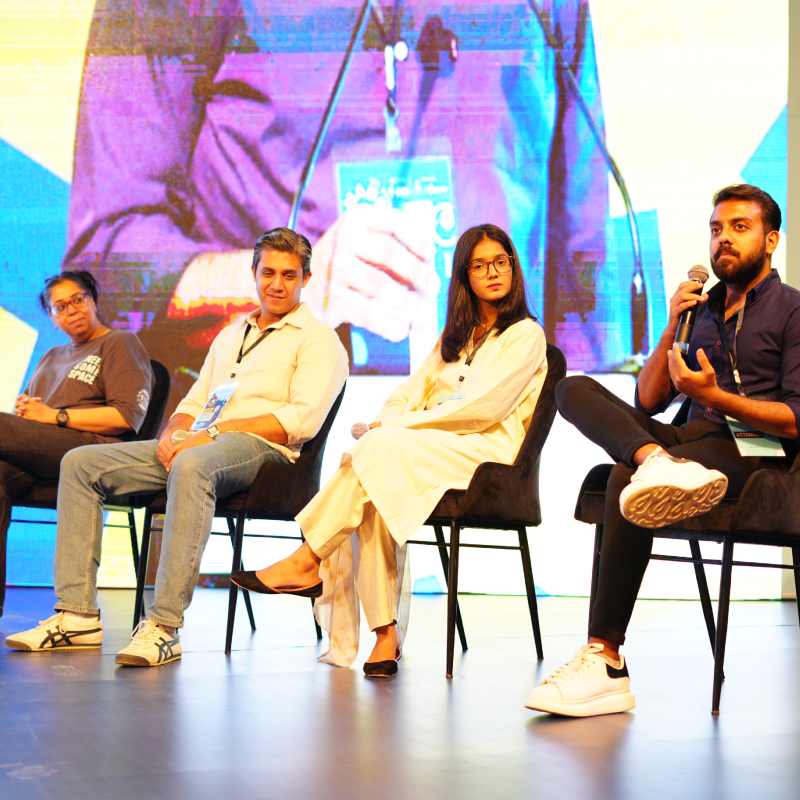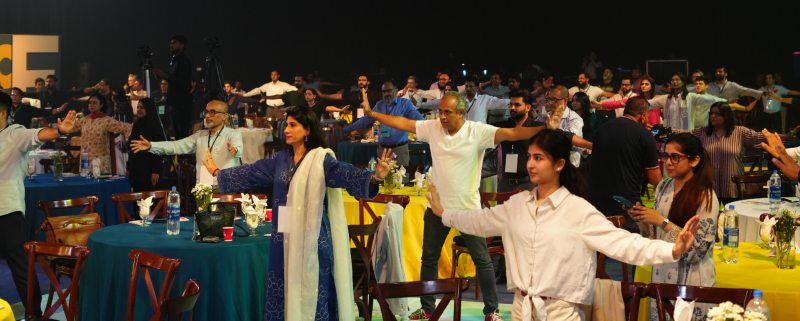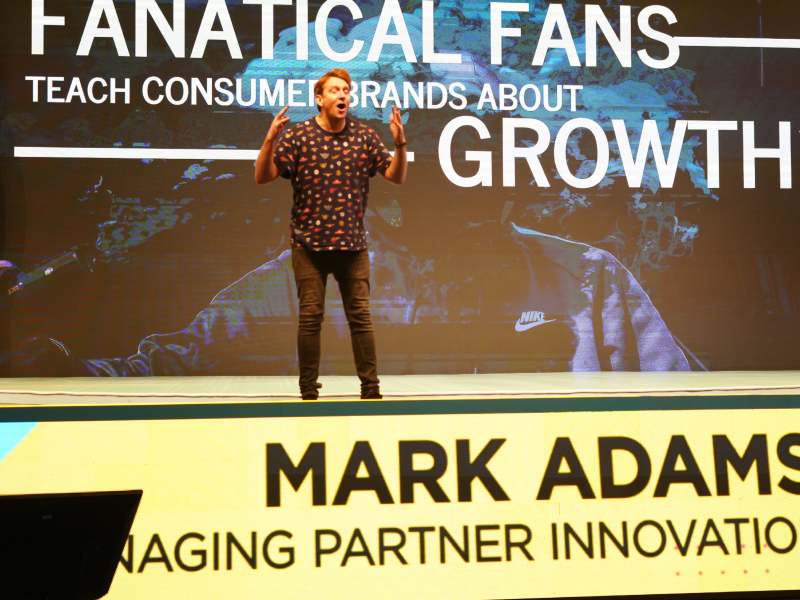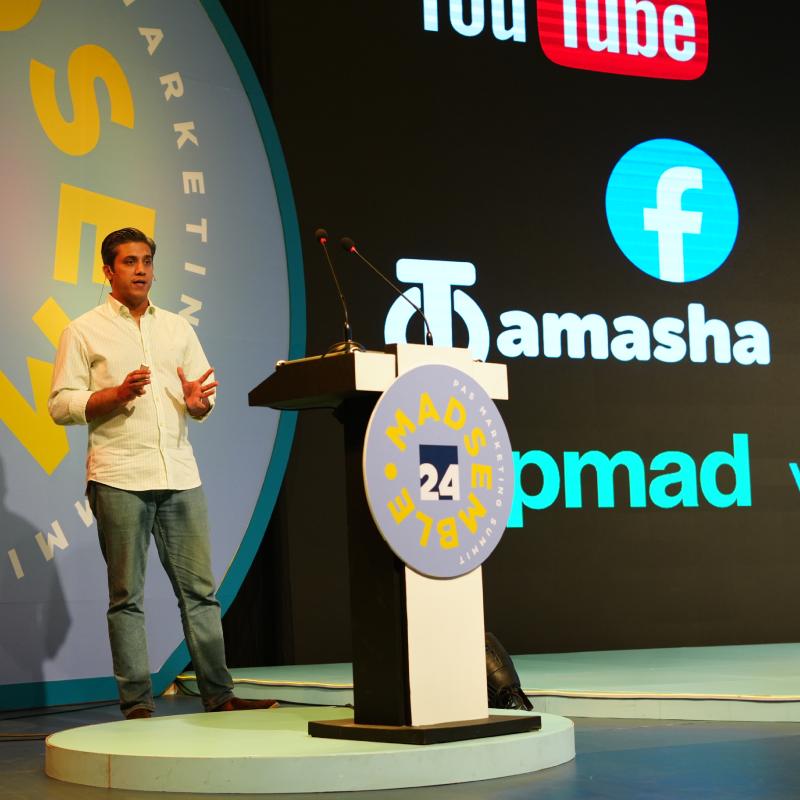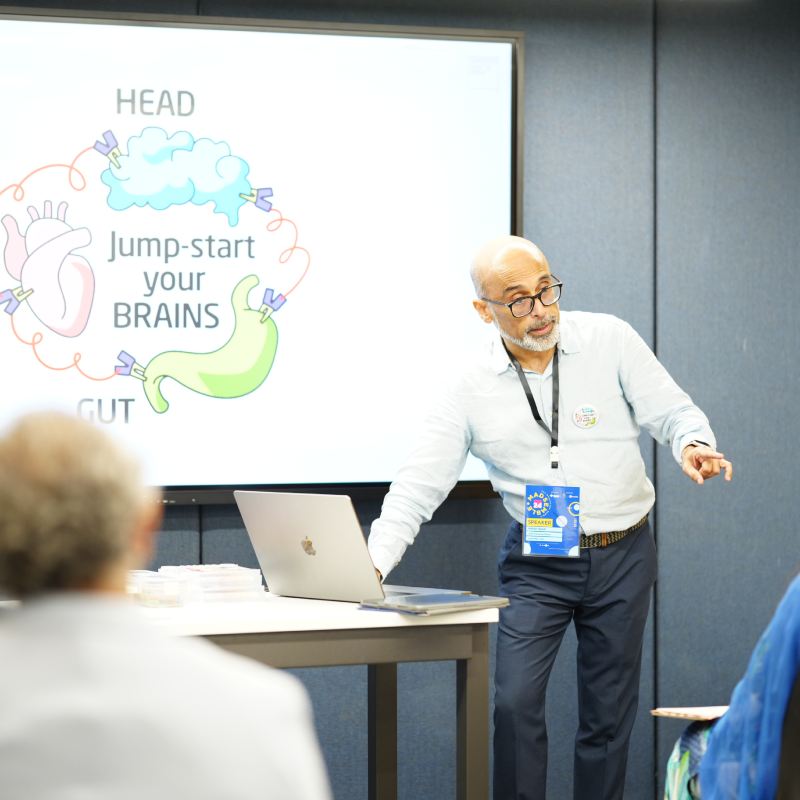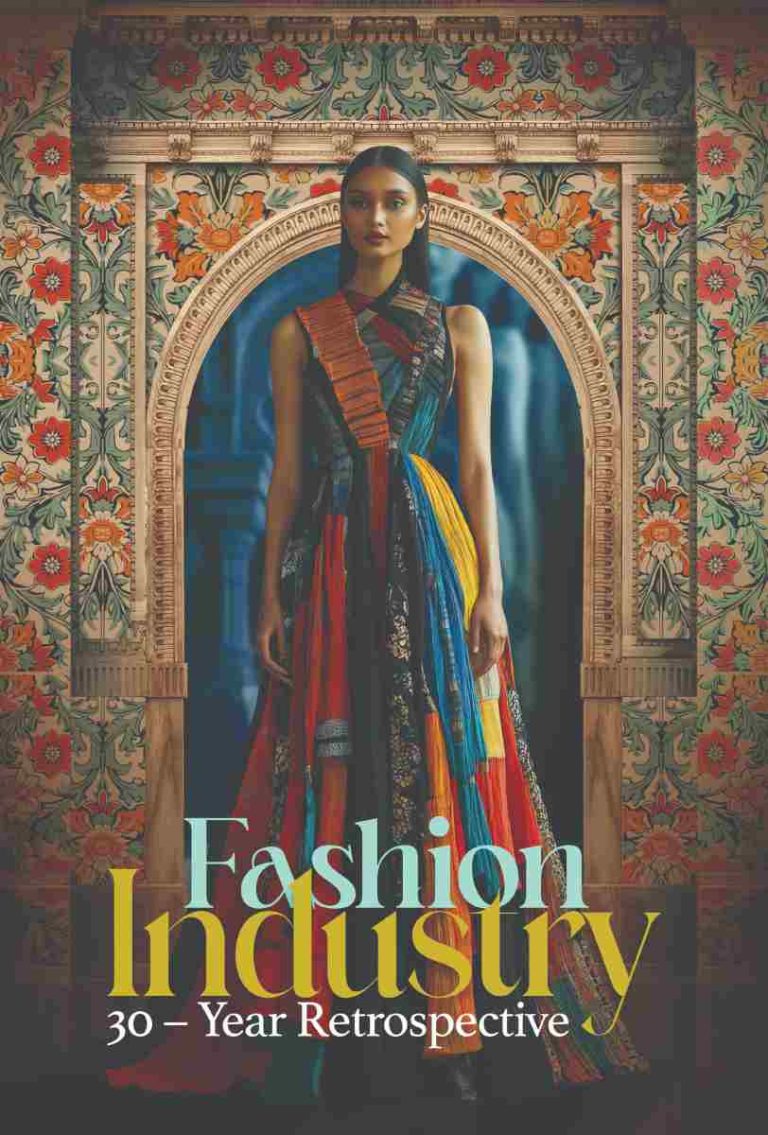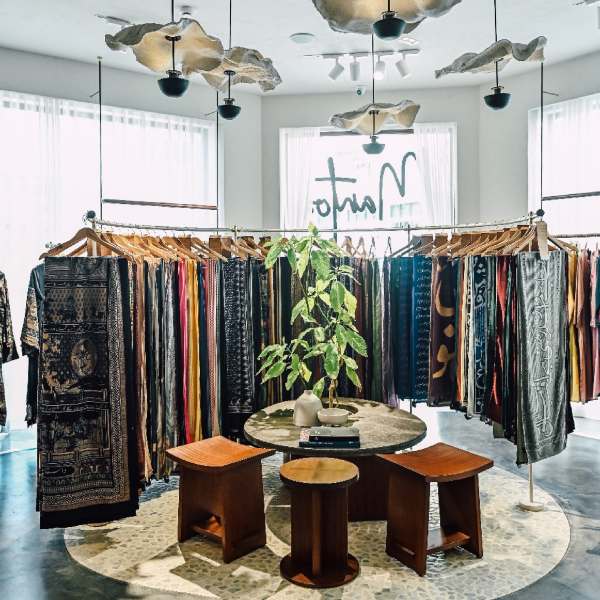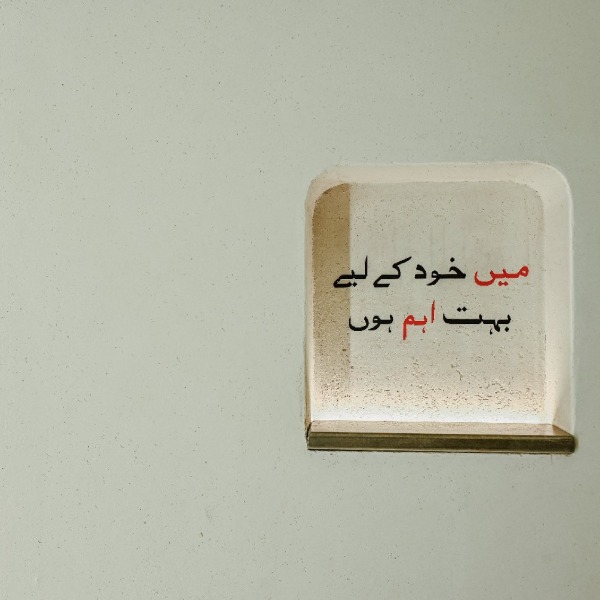Enter the captivating realm of Pakistani fashion, where art, business, and heritage entwine. Uncover the latest trends, incredible talents, and riveting tales shaping this glamorous industry. Delve with us into the rich history, and explore the evolution and the impact on the economy of the style industry. The effects of social media and the digital footprint are revolutionising the fashion industry. A sneak peek of what’s happening with some of the biggest brands in the country, enjoy exclusive interviews, tributes to legends, and tantalising tête-à-têtes with the industry’s brightest minds. Whether you’re a style enthusiast, market insider, or simply curious about the couture arena, we invite you to revel in this alluring journey with us.
The Ultimate Fashion Odyssey!
Pakistani fashion is a kaleidoscope of elegance and exquisiteness, where rich culture seamlessly merges with modern flair. Inspired by the majestic Mughal era, their intricate embroidery and mesmerising motifs adorn ethereal silhouettes. Integrated with luxurious fabrics like silk, velvet, and chiffon draped elegantly with sophisticated thread work and zardozi which add immense depth.
Vibrant hues of emerald green, sapphire blue, and ruby red dance alongside soft pastels, illustrating the nation’s love for drama and grandeur. The classic Sherwani, crafted with gota and kimkhab, exuding regal sophistication, while the flowing maxi dress, adorned with floral patterns, personifying grace, charm and mystique.
Lahore’s bustling streets and Karachi’s urbane chic converge into unique ensembles, where East meets West. Statement pieces, whether it be a Muskesh shawl, chunky silver jewellery or an embellished clutch always adding a touch of enchantment in this world travelling towards minimalism.
Pakistani weddings are a phantasmagoria of colour, sound, and splendour, where fashion reigns supreme. This extravaganza of opulence unfolds amidst mesmerising melodies, rhythmic dholki beats, and euphoric barat processions. Where the grooms exude sophistication in tailor-made Sherwanis, with simple kurtas and churidars, brides dazzle and gleam in other-worldly absolutely spellbinding lehengas, ghararas, and shararas; all adorned with dainty, inexplicably gorgeous embroidery, zardozi, and gota with the soft organzas, lavish silks, and the delicate chiffons draped sublimely, while the majestic jewellery adds the regal flair.
Pakistani fashion’s global ascendance owes much to these wedding celebrations. It is Pakistan’s Fourth Constitution; the weddings! Renowned creators such as Hassan Sheheryar Yasin and Faiza Saqlain create breathtaking attires that blend tradition with innovation, like Yasin’s contemporary take on the classic Sherwani and Saqlain’s baroque use of traditional embroidery techniques with modern silhouettes. These weddings have become an indulgent, incomparable, and intense display of fashion as art, love, identity, and passion. This cultural spectacle has captivated the world, solidifying Pakistan’s position on the world map of fashion.
Embroidery and Elegance
From the incredulous Indus Valley to marvellous modern-day runways, the fashion narrative in this country is a labyrinthine woven tale of ancient civilisations, imperial influences, coming of age modernism. While the majestic Mughal Empire introduced sumptuous fabrics, breath-takingly complex embroidery, and heavily ornamented motifs, shaping the vogue aesthetic even today.
As we embark on this fascinating fashionable journey through Pakistan’s diverse provinces, each region proudly portrays its unique sartorial grandeur, reflecting the country’s rich and ravishing history.
Punjab’s prestigious picturesque attires reign supreme, with intricate phulkari embroidery dancing across vibrant silks and cottons. The classic Punjabi suit – a symphony of straight silhouettes, flowing dupattas, and the ever-lovely Patiala shalwars – is a sight to remember.
The enchanting beauty woven into simple lawns and cottons, the dense and heavily worked Sindhi embroidery, mirror-work and chunky sequins shimmer like moonlit nights on the Indus River. The province’s iconic ajrak prints – deep crimsons, midnight blues, and golden yellows – swirl together in mesmerising, almost hypnotic patterns.
Rugged landscapes inspire the bold and beautiful Balochistani wear, nomadic chic, effortless beauty. Traditional Balochi dresses boasting vibrant, geometric patterns and elaborate thread-work, echoing the magnificence of Turbat forts.
Khyber Pakhtunkhwa’s serene allure is reflected in the delicate Chitrali and Peshawari tapestry, as subtle floral emblems and curved lines adorn fabulous fabrics.
Threads of History
Throughout history, cultural exchange and regional influences have enriched its textile diversity. The Persian and Arabic influx infused Islamic geometric patterns and calligraphy into textile design. The ancient Silk Road facilitated trade, exchanging Chinese silks, Central Asian woollens, and Indian cottons. The British colonial era introduced Western tailoring, influencing modern Pakistani fashion. Post-independence, designers revived traditional and the learnt techniques, blending culture with innovation weaving a stunning fabric of the nation’s multicultural identity.
From the elegant ghararas of the 1940s to the digital revolution of the 2020s, Pakistan’s fashion landscape has undergone a transformative journey. Fatima Jinnah and Rana Liaquat Ali Khan inspired the ‘Pakistani woman’ look: ghararas, kurtis, and dupattas while women from East Pakistan, Sindh, and Punjab maintained regional styles. Sitara Textiles, a 1956 pioneer, has now grown into Pakistan’s premier textile enterprise and excel & textile processing. Local tailoring shops and boutique stores gained popularity, laying the groundwork for the big clothing brands we see today.
In the 1960s, Pakistan embraced Western trends: maxi dresses, gowns, and saris. Club culture and high society emerged, influencing fashion regime. During this period, modernisation and globalisation shaped the country’s style, it wasn’t only promoted but encouraged.
The hippie movement in the 1970s was brought home, introducing flared pants, floral prints, and eccentric jewellery. Teejays by Tanveer Jamshed pioneered in ready-to-wear western fashion along with Bonanza initiating ready-made winter wear, particularly knits for men, women and children.
The 1980s was the time for disco during the very contrasting Zia-ul-Haq’s regime which sparked counter-culture through pop and style, Nazia Hassan and Marina Khan dominated the fashion scene. Later, Benazir Bhutto, the trailblazer in the world of politics, her charismatic charm and fight for liberalism, inspired fashion statements, that are even followed today.
Soon after, the boutique uprising in the 1990s with designers like Nilofer Shahid, and Sana Safinaz rose to fame. Boutique culture flourished, and fashion magazines thrived. Princess Diana wore Rizwan Beyg’s designs. Princess Diana, was the paragon of grace and elegance, the epitome of beauty for all brown women. Which meant Rizwan Beyg became a royalty in the fashion ecosystem of Pakistan.
The 2000s were all about the ready-to-wear, convenience and ease. Brands like Gul Ahmed, Al-Karam, Bonanza Satrangi and Maria B. introduce affordability, accessibility and style. This democratisation of fashion empowered consumers to express their flair and individuality in an easy way. This changed the game, thus becoming the gradual start of the black hole, that we now call fast fashion.
From Lawn to Luxe
During the same time, a lawn insurgence began too with Khaadi and other brands popularising lawns; the fabric, is a commodity now. Supermodels emerged, and designers like Nomi Ansari, HSY, and Zaheer Abbas gained recognition. The creation of extravagant fashion and bridal weeks became mainstream. Traditional craftsmanship, lavish fabrics, and modern design gained international acclaim. From February to October, Pakistan’s fashion landscape is painted with an array of digital prints, geometric patterns, and lively floral prints. Time-honoured embroidery techniques meet contemporary twists, and light-weight fabric, resulting in a marvellous lawn repertoire.
This quintessential Pakistani fabric, is a masterclass in subtlety. Feathery, airy, and effortlessly elegant, lawn’s softness is rivalled only by its versatility. From flowing full-length dresses to stylish kurtas, lawn’s gentle drape makes it a global summer staple. Pakistani Lawn uniqueness lies in its expert blending of traditional techniques with modern innovation. Lawn’s colour palette in the summer is a symphony of hues playing soft pastels of dawn-kissed skies, lush greens of emerald fields and dusty blues of ancient Mughal architecture.
Brands like Alkaram, Gul Ahmed, Bonanza Satrangi and Sana Safinaz have elevated lawn to haute couture, while designers like Saira Shakira and Ali Xeeshan push boundaries with constant innovation.
During the 2010s ‘Fast Fashion’ took Pakistan by a storm! Generation, Sapphire, Zellbury and Ethnic led the charge, making style affordable and accessible. Consumers ditched tailoring hassles and indulged in mass produced high-street heaven. Fashion merged with TV and cinema, featuring superstars on runways. Events like PFDC Fashion Week and Fashion Pakistan Week celebrated diversity, creativity and pure talent. These platforms connected clothing brands with buyers, media, and fashion enthusiasts.
Stitching Stories
The sun rose in the 2020s with a digital sky while COVID-19 impacted the industry, pushing designers toward technological innovation. Pakistani clothing brands expanded globally through e-commerce. Online stores made collections attainable worldwide, eliminating the traditional retail middlemen.
New SOPs and virtual fashion shows emerged. Sustainability and online presence became key. Social media became king and brands like Sapphire and Generation promoted moral and environmentally – friendly business practices. They empowered regional communities and implemented
eco-friendly production techniques.
Post-Covid, brands blended traditional aesthetics with contemporary Western silhouettes, prints, and fabrics. This fusion appealed to modern Pakistanis and international audiences seeking distinctive, innovative fashion concepts.
Pakistani fashion is more than just attire now; it’s a powerful medium for self-expression, cultural pride, and national and personal identity.
On Independence Day, green and white ensembles dominate the fashion scene, embodying national pride. Eid celebrations burst with colour, as vibrant lawn and silk fabrics showcase traditional craftsmanship. Women adorn themselves in embellished kurtas, ghararas, and lehengas, while men wear elegant kurtas, waistcoats, pyjamas and Sherwanis. The perfect jhumkis with matching churiyaan is what completes
the ‘Eid Look’.
Pakistani fashion elegantly blends traditionality with contemporary style, cultivating a deep sense of identity, and creative expression. Designers weave the nation’s rich literary heritage into their fabrications, transcending all and every boundary. Calligraphy on clothes and scarves becomes a poignant canvas, capturing the essence of spiritualism and literary mysticism. The poetic verses of Rumi, Ghalib, and Iqbal come alive along with quotes from revolutionary writers like Manto on flowing fabrics. They drew inspiration from the works of literature, embedding its powerful words into bold, statement pieces celebrating Pakistan’s literature legacy.
Weaving the Future
Pakistan has evolved to embrace age diversity, inclusivity, and individuality. Stylists and labels now cater to a wide range of ages, styles, and preferences, celebrating the unique beauty of each individual. Brands like Republic Women’s Wear, Kayseria, and Saira Shakira offer stylish, stunning, androgynous and gender-neutral collections blurring traditional boundaries, producing contemporary, one-of-a-kind pieces appealing to a large group. Breaking stereotypes, a few fashion houses are also creating remarkable, plus-size collections, fostering body positivity and self-acceptance. Modest wear by different brands and designers is catering to diverse modesty preferences. Pakistani designers collaborate with disability advocates to model their designs, encouraging self-expression and confidence.
Our fashion landscape has undergone the latest transformative shift, embracing sustainability as its cornerstone. Pioneering labels like Rastah, Parishae, Bazazi, and Shahkaar by Adila are redefining conventional Pakistani fashion, each brand has carved its unique path with sustainability, from eco-friendly materials to culturally conscious designs, and most importantly distinctive pieces that are neither here nor there. They are an amalgamation of the country’s culture and the modernity of the times, reimagining what it means to be Pakistani in a globalised world.
But fashion is no longer just about aesthetics; it’s about narrative. Pakistan’s fashion landscape is witnessing a surge in innovative advertising, as brands leverage social media to connect with their audience.
The Rise of Pakistani Fashion
In today’s digital age, Pakistani fashion brands are killing the social media game! From celebrity endorsements to corporate social responsibility, some brands redefined the rules of engagement.
Zara Shahjahan’s #IMadeItCampaign highlighted the skilled labourers behind the brand’s impeccable designs. The #StepOutside campaign by Generation encouraged women to reclaim public spaces. Deepak Perwani’s ‘Fix It’ campaign drew attention to Karachi’s neglected infrastructure. The #AntiSizeZero campaign promoted body positivity, featuring real women by the lovely Sanam Chaudhri.
By embracing digital storytelling, Pakistani clothing brands bring their designs, artisans, and inspirations to life, forging deeper relationships with customers.
Consequently, social media and influencer marketing have emerged as transformative forces. Clothing brands are now harnessing these tools to revolutionise their outreach and engagement. By leveraging social media, brands can personally connect with their target audience, build a strong brand identity through strategic marketing, and foster meaningful relationships with clients through influencer partnerships. Platforms like Instagram, Facebook, Twitter, and TikTok serve as digital runways. This new approach enables labels to share their unique stories in not only an easy manner but also for a wider audience. Likewise, Pakistani apparel firms have undergone a digital transformation through e-commerce, propelling them onto the global stage. With a strong online presence, they’ve tapped into export markets, fostering growth and international recognition for Pakistan’s fashion industry.
The Tale of two Worlds
Despite these successes, Pakistan’s fashion landscape is still a tale of two worlds: vibrant, eclectic eastern wear and a stark, lacking western wear scene. Regardless of the growing demand, affordable quality western attires remain an elusive dream.
Pakistan’s fashion market struggles to keep pace with the changing seasons. Summer’s scorching heat brings an onslaught of flimsy, see-through tops, while winters offer coats that are either suffocatingly thick or woefully inadequate. And oh! The repetitive button downs, every colour and in every material. Spring and autumn, with their mild temperatures, are met with a puzzling dearth of transitional wear. This seasonal scarcity leaves consumers scrambling for suitable attire, forced to choose between ill-suited options or expensive imports.
The Pakistani denim market’s limitations are stark, with scarce and low-quality fabrics, inadequate pockets, and waistlines that either constrict or swamp. Consumers’ quests for well-fitting jeans remain elusive, underscoring the market’s failure to cater to diverse body types.
Global fashion trends and runway shows tantalise Pakistani consumers, but local adaptations fall short. Comfortable, stylish western wear seems reserved for foreign shores. The disconnect between international inspiration and local reality is disheartening, leaving consumers yearning for affordable, quality options that understand their climate, culture, and comfort.
While Pakistan’s fashion landscape shines bright with bridal and occasional wear, unfortunately, its professional and practical side remains dull and neglected. The industry’s focus on fancy and celebratory clothing leaves a void in everyday, profession-specific clothing. The professional landscape is also plagued by a severe lack of stylish, comfortable office wear. This undersupply forces professionals to settle for subpar attire, compromising their confidence and productivity. Innovative designers and brands can step up, catering to the unique requirements of these professionals.
The Fashion Renaissance
Handbags and purses prioritise aesthetics over functionality, lacking essential features like laptop sleeves, tablet pockets, or phone compartments.
Professionals who stand all day are forced into medicated, dull shoes – expensive and unstylish. Comfortable, practical options are scarce, while petite sandals and high heels abound.
A brighter future awaits Pakistan’s fashion industry, fuelled by talent, technology, and tradition. While challenges persist, innovative designers and brands are harnessing digital platforms, sustainability, and cultural diversity to drive success. Addressing domestic shortcomings and capitalising on global trends, Pakistan’s fashion market is set for significant growth. It’s set to reach $972.90 million by 2024 and grow 4.87% annually, hitting $1.234 billion by 2029. Currently, about 5% of the population buys fashion online (2024). However, this percentage is expected to slightly decrease to 4.3% by 2029 and approximately 4.9 million people will shop online for fashion. With these promising statistics, Pakistan’s fashion industry is poised for remarkable growth, cementing its position as a vibrant and influential player in the global fashion landscape.


